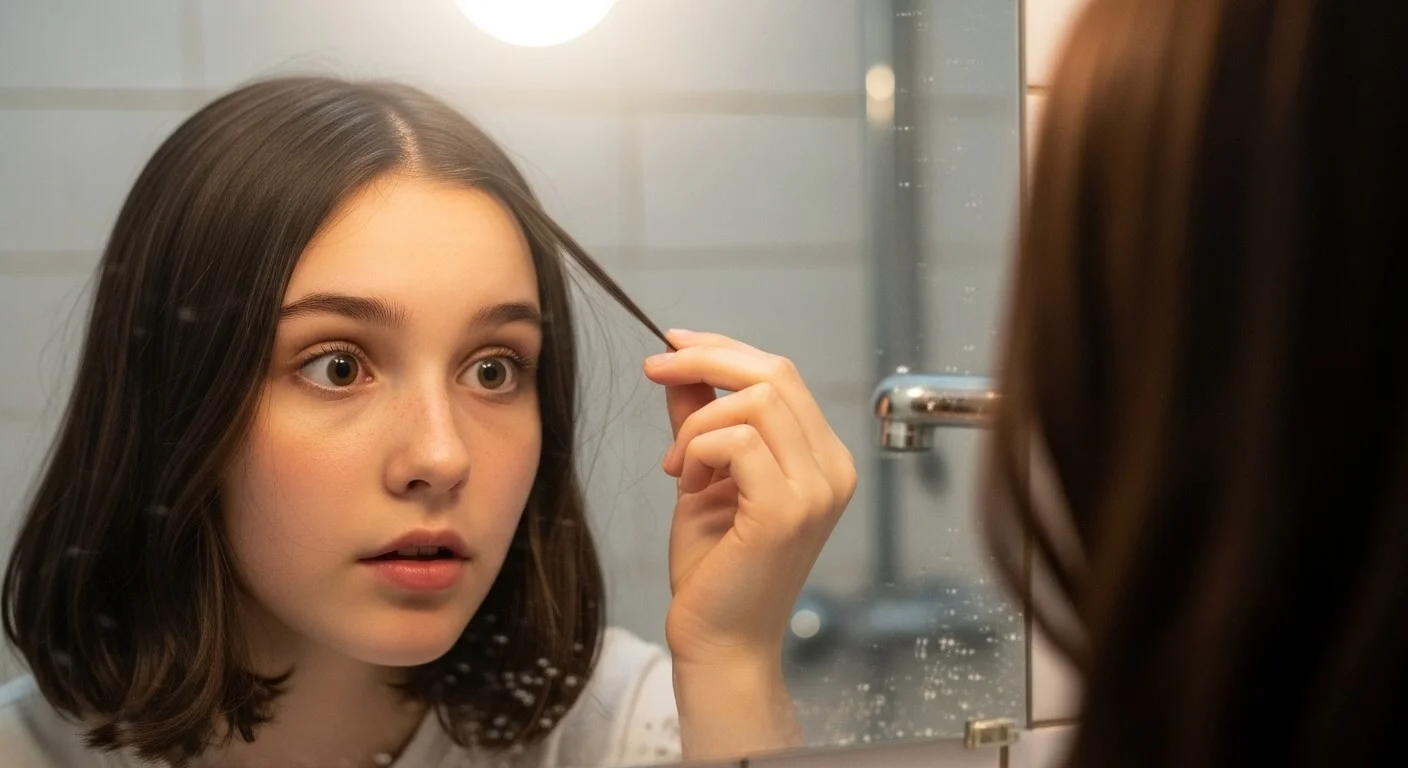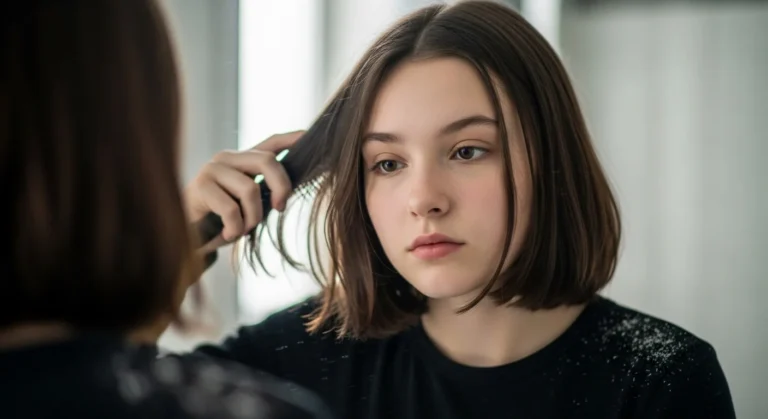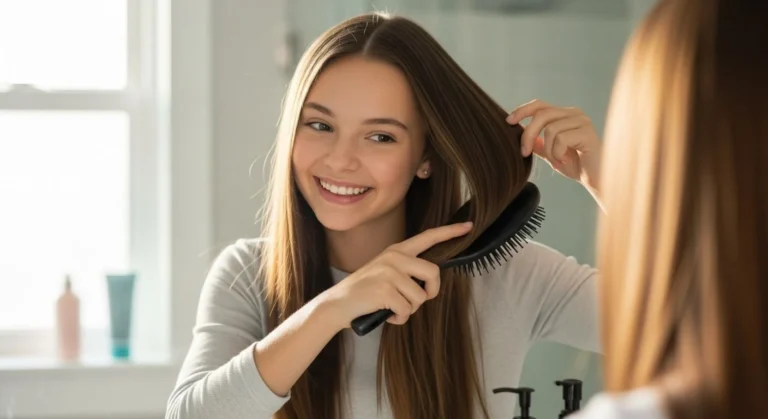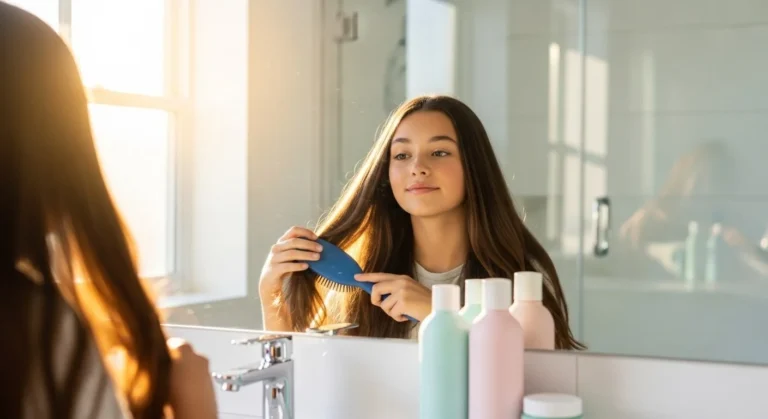How to Understand Why Some Teens Get Early Gray Hair
Noticing a few gray strands in your teenage years can be surprising even a little shocking! You might be brushing your hair one morning before school and spot a silver shimmer that wasn’t there yesterday. But don’t panic gray hair in teens is more common than you think.
It’s not always about aging; several factors, from genetics to lifestyle, can cause those early grays to appear. The good news? You can often manage or slow them down with a few simple habits.
Let’s break down the five main reasons why some teens get gray hair earlier than others and what you can do about it.
1. Genetics — The Biggest Factor
If your parents or grandparents started turning gray early, there’s a high chance you might too. Genetics play the biggest role in when your hair begins to lose its pigment.
Hair color is controlled by cells called melanocytes, which produce melanin the same pigment that gives your skin and eyes their color. When these cells slow down or stop working, hair starts to appear white or gray.
So, if your mom spotted her first gray at 18, it might just run in the family. Unfortunately, there’s no “cure” for genetic graying, but you can keep your hair healthy and strong to delay the process.
Tips to slow down hereditary graying:
- Eat foods rich in antioxidants (like berries, spinach, and nuts).
- Massage your scalp regularly to improve blood flow.
- Avoid harsh chemical treatments that damage hair follicles.

💡 Fun fact: Scientists say premature graying before age 20 in teens is considered early, especially in darker hair types.
2. Vitamin Deficiencies and Poor Diet
A lack of proper nutrition can speed up the graying process. Your hair needs vitamins and minerals to produce melanin and stay vibrant. If you skip meals or rely too much on junk food, your hair may start losing color faster.
Key nutrients for hair color:
- Vitamin B12: Helps make red blood cells that carry oxygen to hair roots.
- Copper: Supports melanin production.
- Iron and Zinc: Keep follicles healthy and nourished.
- Protein: Builds the keratin that gives hair strength.
Signs your hair may need a nutrient boost:
- Thinning or brittle strands
- Increased hair shedding
- A dull or faded hair tone

💡 Easy fix: Try adding eggs, lentils, leafy greens, and fish to your meals or take a multivitamin after consulting a doctor. Small diet changes can make a big difference in hair health.
3. Stress and Lifestyle Habits
Ever heard someone say, “You’re giving me gray hair!”? Turns out, it’s not just a saying. Stress really can lead to premature graying.
When you’re stressed, your body releases a hormone called cortisol, which affects the pigment-producing cells in your hair follicles. Over time, this can lead to loss of color. Teens today face a lot exams, social media pressure, and less sleep all of which take a toll on your hair too.
Try these stress-busting habits:
- Get 7–8 hours of sleep each night.
- Spend time outdoors or take tech-free breaks.
- Practice deep breathing or yoga for a few minutes daily.
- Keep a balanced school-life routine.

💡 Tip: Even simple changes like reducing screen time before bed or drinking more water can help lower stress levels and protect your hair’s natural color.
4. Chemical Exposure and Hair Treatments
Many teens love experimenting with their hair from dyeing to straightening to using heat tools daily. But harsh chemicals can damage melanin cells, speeding up the graying process.
Frequent use of:
- Hair dyes with ammonia or peroxide
- Straighteners and bleach
- Heat styling tools without protection
…can weaken your hair and make it more likely to turn gray earlier than it should.
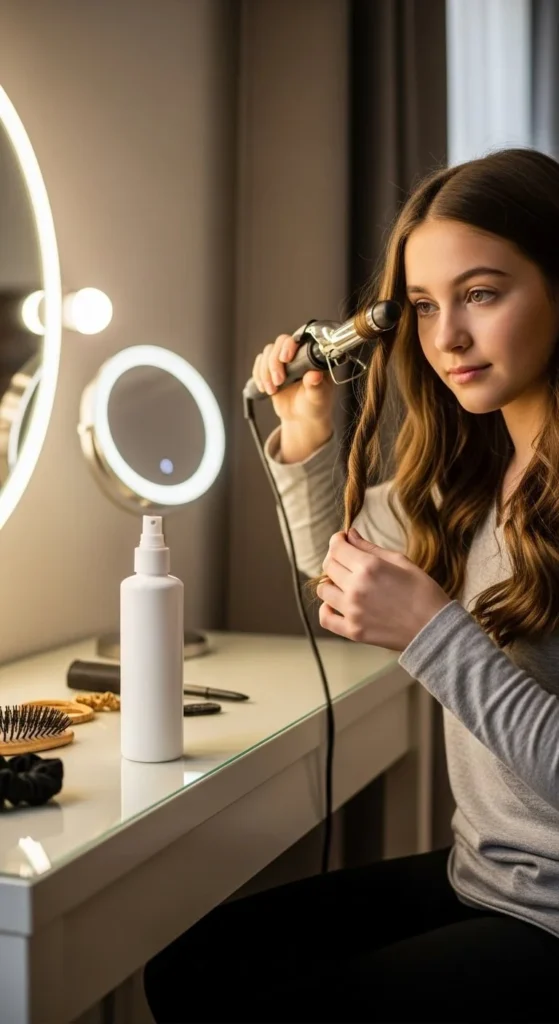
To protect your strands:
- Choose natural hair colors like henna or ammonia-free dyes.
- Limit heat styling to 2–3 times a week.
- Always use a heat protectant spray before straightening or curling.
💡 DIY idea: Apply coconut oil mixed with curry leaves once a week. It’s a traditional method believed to nourish roots and prevent graying naturally.
5. Medical Conditions or Hormonal Imbalances
Sometimes, early graying can be linked to underlying health conditions. For example, thyroid problems or autoimmune issues can affect how your hair grows and produces pigment.
Conditions like:
- Vitiligo: Causes loss of pigmentation in skin and hair.
- Thyroid disorders: Disrupt hormone balance, affecting melanin.
- Anemia: Reduces oxygen flow to hair roots, slowing pigment production.
If you’re seeing sudden, patchy graying along with fatigue, weight changes, or hair thinning, it might be worth talking to a doctor. A simple blood test can help rule out any deficiencies or hormone imbalances.
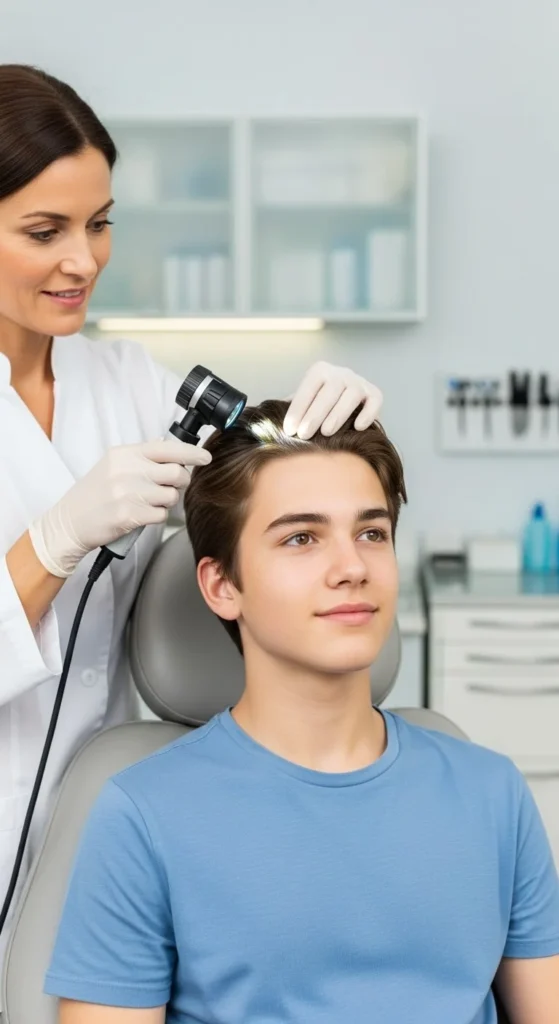
💡 Tip: Staying active and keeping a balanced diet helps maintain overall hormonal health and supports your scalp in the process.
Everyday Habits to Keep Hair Healthy and Vibrant
Even if gray strands have started showing, you can keep your hair looking healthy and strong with a few daily habits:
- Use mild, sulfate-free shampoos.
- Massage your scalp with natural oils like almond or olive oil.
- Protect your hair from sun exposure by wearing a hat.
- Avoid crash dieting your hair needs steady nutrients.
- Stay hydrated and reduce processed food intake.
Final Takeaway
Seeing gray hair as a teen might feel strange at first, but remember it’s not a bad thing or a sign of aging too soon. Whether it’s genetics, diet, stress, or styling habits, most causes can be managed with care and consistency.
The best approach? Focus on keeping your scalp healthy, eating nutrient-rich foods, and giving your hair the love it deserves.
✨ Save this post for later and if you find a gray strand, don’t stress! It’s just another sign of your body’s unique journey.

